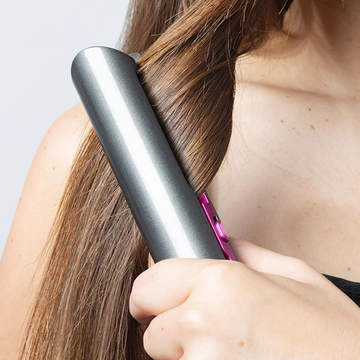If your hair has been looking a little lackluster lately, you’re not alone. Between product buildup, hard water, and environmental pollutants, strands can start to look dull, limp, and lifeless. That’s where the humble vinegar hair rinse comes in — a centuries-old beauty secret that’s getting a major modern revival. Using vinegar, especially apple cider vinegar, can gently clarify your scalp, restore shine, and bring balance back to your hair without harsh chemicals. Best of all? It’s budget-friendly and incredibly easy to do at home.
In this guide, we’ll break down exactly why vinegar works, how to do it step-by-step, the best variations for your hair type, and the common mistakes to avoid so you get salon-worthy results every time.
Why vinegar works wonders for your hair
The idea of pouring vinegar on your hair might sound strange at first, but there’s solid science behind it. Hair and scalp thrive at a slightly acidic pH, ideally between 4.5 and 5.5. Many shampoos, styling products, and even tap water can push that balance toward alkaline, which opens up the hair cuticle and leaves it more prone to frizz, dullness, and tangles.
Vinegar, particularly apple cider vinegar (ACV), naturally restores acidity, helping to smooth the cuticle, lock in moisture, and increase shine. It also works as a gentle clarifier, breaking down product residue, excess oils, and hard water minerals that regular shampoo might miss.
Some of the key benefits include:
- Shinier hair thanks to a smoother cuticle surface that reflects light
- Healthier scalp by balancing pH and reducing flakiness
- Better manageability because hair detangles more easily
- Reduced frizz due to the cuticle lying flat
- Longer-lasting hair color, since a healthy pH can help minimize fading
And yes, while white vinegar can work in a pinch, apple cider vinegar is often the go-to because it contains beneficial nutrients like potassium, magnesium, and a small amount of natural fruit acids that nourish hair.

Choosing the right vinegar for your rinse
Not all vinegars are created equal when it comes to hair care. While technically any vinegar will help lower pH, the type you choose can make a difference in both results and scent.
Apple cider vinegar (ACV)
The most popular choice, ACV is made from fermented apple juice and contains natural enzymes, vitamins, and minerals. It’s gentle yet effective, making it ideal for most hair types.
White vinegar
Stronger in acidity and smell, white vinegar is excellent for a deep clarifying rinse but can be a little harsher on dry or color-treated hair. If you go this route, dilute it more heavily.
Herbal-infused vinegar
For an extra boost, you can infuse ACV with herbs like rosemary (for hair growth), chamomile (for brightness), or lavender (for calming the scalp). This adds fragrance and targeted benefits.
Balsamic vinegar
Tempting as it might be to try what’s in your salad dressing, balsamic is too sticky, dark, and sugary for hair — save it for your kitchen creations.
How to prepare the perfect vinegar rinse
The magic of a vinegar rinse lies in the balance between strength and gentleness. Too much vinegar can lead to dryness; too little, and you won’t achieve the full effect. Here’s a reliable starting recipe for most hair types:
Basic recipe:
- 2–4 tablespoons apple cider vinegar
- 1 cup cool water
Instructions:
- In a clean squeeze bottle, combine the vinegar and water.
- Shake gently to mix.
- Adjust the ratio based on your needs — more vinegar for oily hair, less for dry or fine hair.
You can also add a few drops of essential oils like lavender, peppermint, or rosemary for fragrance and added scalp benefits.
The step-by-step process for doing a vinegar hair rinse
A vinegar hair rinse might sound simple — and it is — but getting it just right makes all the difference between a refreshing, scalp-loving treatment and a pungent disaster. The key is to think of it as a ritual rather than a quick splash. Here’s exactly how to do it for maximum shine, scalp balance, and zero hair damage.
Step 1: Choose your vinegar wisely
Not all vinegars are created equal. For hair, raw, unfiltered apple cider vinegar (ACV) with the “mother” is the gold standard because it contains beneficial enzymes and good bacteria that help balance your scalp’s pH. Avoid distilled white vinegar unless you’re in a pinch — it’s more acidic and can be a little harsh on sensitive scalps. Look for organic varieties if possible, and store it in a cool, dark place to preserve its potency.
Step 2: Dilute — always
This is where most first-timers go wrong. Straight vinegar is way too strong for your scalp and hair; it can cause irritation or dryness. The sweet spot is typically 1–4 tablespoons of ACV per 1 cup of water. If your hair is oily, you might lean toward the higher end. If your hair is dry or fine, stick to 1–2 tablespoons. Room-temperature water works best — warm water can open the cuticle more, while cold water may be a little shocking.
Step 3: Start with freshly washed hair
A vinegar rinse works best on clean hair because shampoo removes the excess oils, product buildup, and surface dirt, allowing the vinegar to penetrate the cuticle and reach your scalp more effectively. Use a gentle, sulfate-free shampoo to avoid stripping your hair before the rinse. Make sure to rinse out all shampoo thoroughly so the vinegar can work on a clean canvas.
Step 4: Apply slowly and evenly
Pour the vinegar solution into a squeeze bottle or spray bottle for easier control. Tilt your head back slightly, start at the roots, and slowly work your way toward the ends. Massage the solution gently into your scalp using your fingertips — not your nails — to help loosen buildup and encourage circulation. If your ends tend to be dry, focus more on the scalp and mid-lengths, letting the diluted solution trickle down naturally.
Step 5: Let it sit — but not too long
Two to five minutes is the sweet spot. This gives the vinegar time to balance your scalp’s pH, smooth the cuticle, and break down any residue. You might feel a light tingle — that’s normal — but if you feel any burning or itching, rinse immediately. For deeper treatment days, you can use a shower cap to trap a little warmth, which can help the rinse penetrate better, but avoid exceeding five minutes to prevent over-acidifying your strands.
Step 6: Rinse thoroughly with cool water
Cool or lukewarm water is your friend here. It seals the cuticle and locks in the smoothness and shine that the vinegar rinse creates. Make sure all traces of vinegar are rinsed away — you want that glossy finish, not a lingering salad smell.
Step 7: Follow up with moisture if needed
If your hair is prone to dryness, follow with a lightweight leave-in conditioner or a hydrating hair oil, focusing on the ends. The vinegar will have clarified your strands, so your conditioning products will sink in more effectively. (If you need a little extra boost, the Lauren Ashtyn Moisture Repair Spray is a great option.)
Step 8: Style as usual
The magic of a vinegar rinse is that your hair will likely feel lighter, softer, and more manageable right away. Go ahead and style as you normally would, and enjoy the extra shine.
Extra pro tip:
If you’re nervous about the scent, you can add a few drops of essential oil (like lavender, rosemary, or peppermint) to your vinegar mixture. It won’t interfere with the rinse’s benefits but will give you a much more spa-like experience.
Tailoring your vinegar rinse to your hair type
The beauty of a vinegar rinse is that it’s easy to customize.
Oily hair and scalp: Use the higher end of the vinegar ratio (4 tablespoons per cup of water) and do the rinse 1–2 times per week.
Dry or curly hair: Use less vinegar (2 tablespoons) and limit rinses to once every 1–2 weeks.
Color-treated hair: Stick to ACV and do a patch test first. Use cool water for rinsing to help preserve color.
Fine hair: Keep the vinegar diluted and avoid heavy conditioning afterward to maintain volume.

Common mistakes to avoid when doing a vinegar rinse
While this treatment is simple, there are a few pitfalls that can sabotage your results.
Using vinegar straight. Undiluted vinegar is far too strong and can irritate your scalp.
Overdoing it. Daily vinegar rinses can lead to dryness.
Skipping the rinse-out. Leaving vinegar in your hair without rinsing can leave an unpleasant smell and alter the pH too much.
Not adjusting for your hair type. The right ratio and frequency matter for getting the best results without damage.
How often should you do a vinegar hair rinse?
For most people, once a week is plenty. If you have oily hair, you might benefit from two rinses per week, while those with dry or textured hair might stick to every other week. Pay attention to how your hair feels — if it starts to feel rough or dry, scale back.
The science behind the shine
The reason vinegar works so well as a shine booster comes down to how it affects the cuticle. A healthy hair cuticle lies flat, reflecting light smoothly. When the pH is too high, the cuticle lifts, scattering light and making hair look dull. The acidic nature of vinegar flattens the cuticle back down, creating that glossy, healthy finish you’ll notice after the first rinse.
Pairing your vinegar rinse with other treatments
You don’t have to use a vinegar rinse in isolation. It pairs beautifully with other natural treatments, like coconut oil masks for deep moisture, aloe vera gel for soothing the scalp, and rice water rinses for strengthening strands. Just remember to space out strong treatments so you’re not overwhelming your hair.
Why vinegar might be your new hair-care MVP
A vinegar hair rinse is one of those rare beauty rituals that’s both incredibly effective and wonderfully simple. It doesn’t require a big investment, fancy tools, or even much time — just a little bit of patience and the willingness to try something that’s been trusted for generations. Whether you’re fighting frizz, chasing shine, or simply craving a cleaner scalp, vinegar might be the missing piece in your routine.
So next time your hair feels weighed down or dull, skip the expensive clarifying shampoo and head to your pantry. You might just discover that the secret to your best hair yet has been sitting on the shelf all along.




